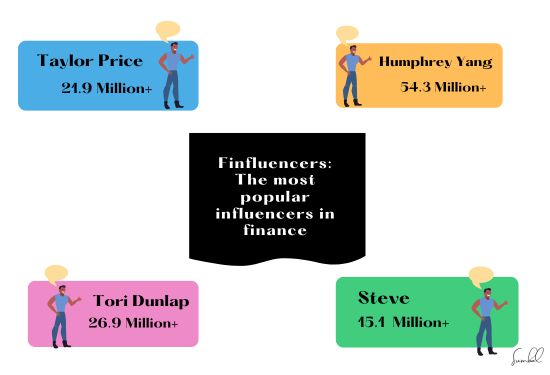Finfluencers, or financial influencers, are social media influencers that have emerged in recent years. These individuals frequently reach millions of young adults looking for financial management assistance by sharing personal finance techniques, investing advice, and financial advice on sites such as YouTube, Instagram, and TikTok. From investing and debt management to budgeting and saving, the emergence of influencers has profoundly affected Millennials and Gen Z's financial decision-making. However, their increasing visibility also questions the veracity and correctness of disseminating financial advice.

The Rise of Finfluencers
With the rise in social media usage for entertainment and information, influencers have become more well-known. Particularly among younger audiences who might not have access to traditional financial education, platforms such as Instagram and TikTok, renowned for their short-form, captivating content, have emerged as the go-to sources for financial advice.
Many influencers portray themselves as approachable, self-taught investors or people who have conquered financial obstacles, such as debt repayment or early financial freedom. By sharing their own stories, they reduce the intimidation and increase the accessibility of financial subjects. Millennials and Gen Z, who frequently feel cut out from traditional financial advice provided by banks or other financial organisations, will find resonance in this.

The Appeal to Younger Audiences
Social media platforms are perfect for younger generations' learning styles since they often absorb knowledge quickly and visually. Influencers frequently provide engaging, aesthetically pleasing, and simple-to-understand material that makes personal finance approachable for those who might have previously been scared by it.
Furthermore, the material that influencers create is consistent with the beliefs of these generations, who emphasise long-term stability, flexibility, and financial independence more than more conventional financial objectives like property ownership. Because of this, subjects like investing in stocks or cryptocurrencies, side projects, and budgeting are incredibly well-liked.
The Influence on Financial Decision-Making
Influencers have positive and negative effects, even though they might motivate young individuals to take charge of their finances. On the one hand, they have contributed to increasing awareness of the value of financial literacy. Through social media, many young folks who may not have had formal financial education are now learning the fundamentals of investing, saving, and budgeting.
However, not all of the financial advice that influencers give is reliable. Some offer too general or nuanced advice, which might be dangerous. For instance, recommendations to invest in specific equities or cryptocurrencies may ignore crucial elements like risk tolerance, market volatility, or long-term financial planning. Some viewers may make rash financial decisions based on inaccurate or too optimistic information because they are driven by the quest for rapid wins.
The Need for Critical Thinking
Influencers are vital in spreading financial awareness, but young people should exercise caution when following their advice. Because they are well-known on social media, only some people will benefit from someone's advice. Before making critical financial decisions, viewers should confirm suggestions with specialists or reliable financial sources.

Conclusion
Through social media, influencers have unquestionably changed the financial literacy landscape for Gen Z and Millennials by making personal finance more approachable and exciting. Even while they have helped raise awareness of financial issues, young individuals should critically assess the information they are given. If they mix inspiration and practicality correctly, influencers may assist young people in making wise financial decisions.





